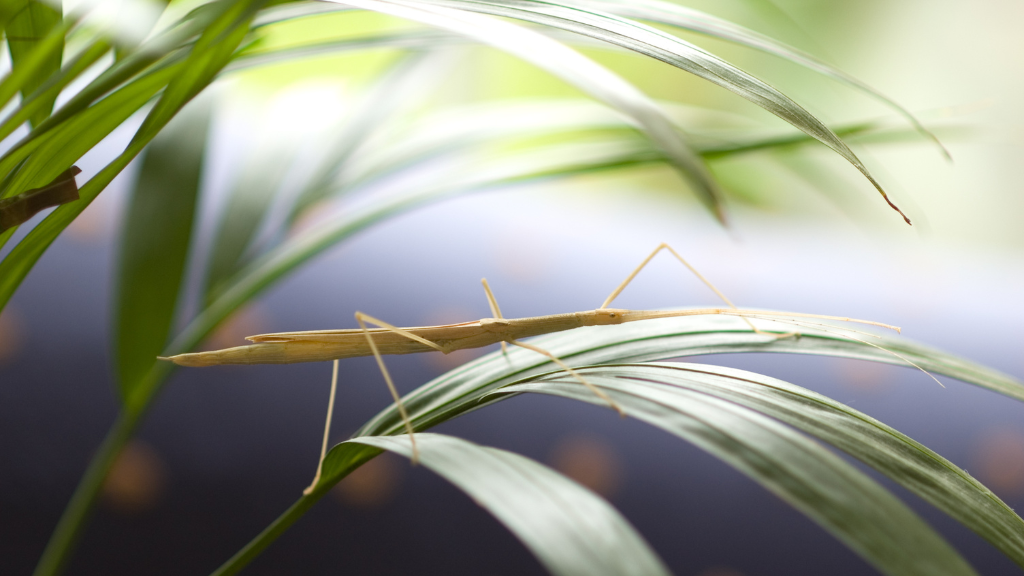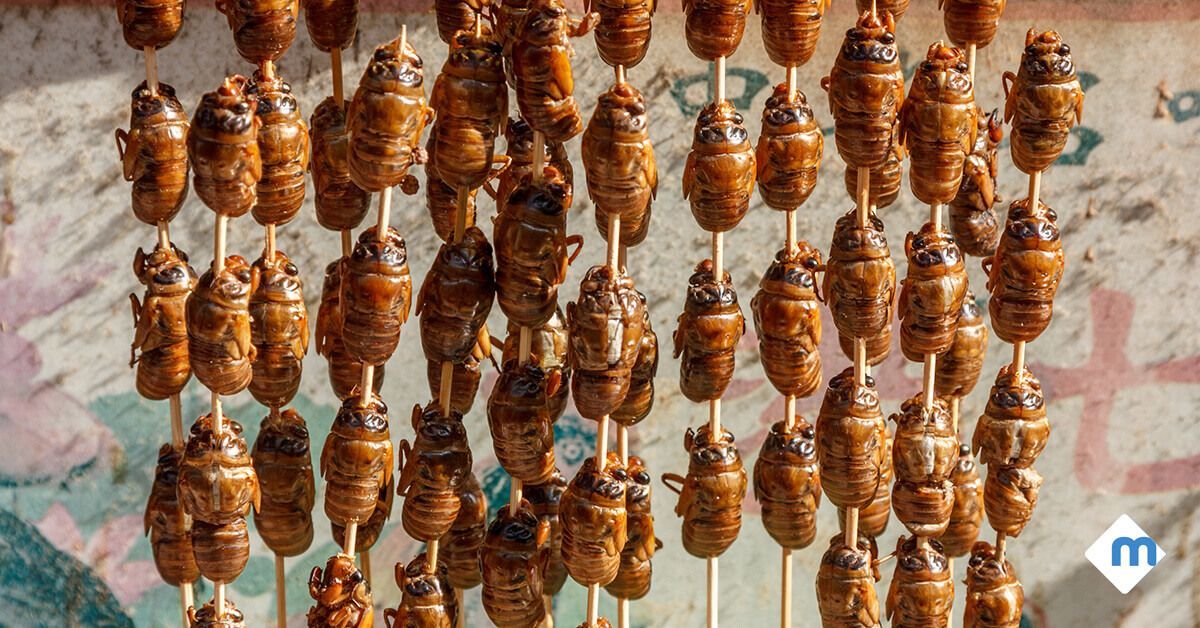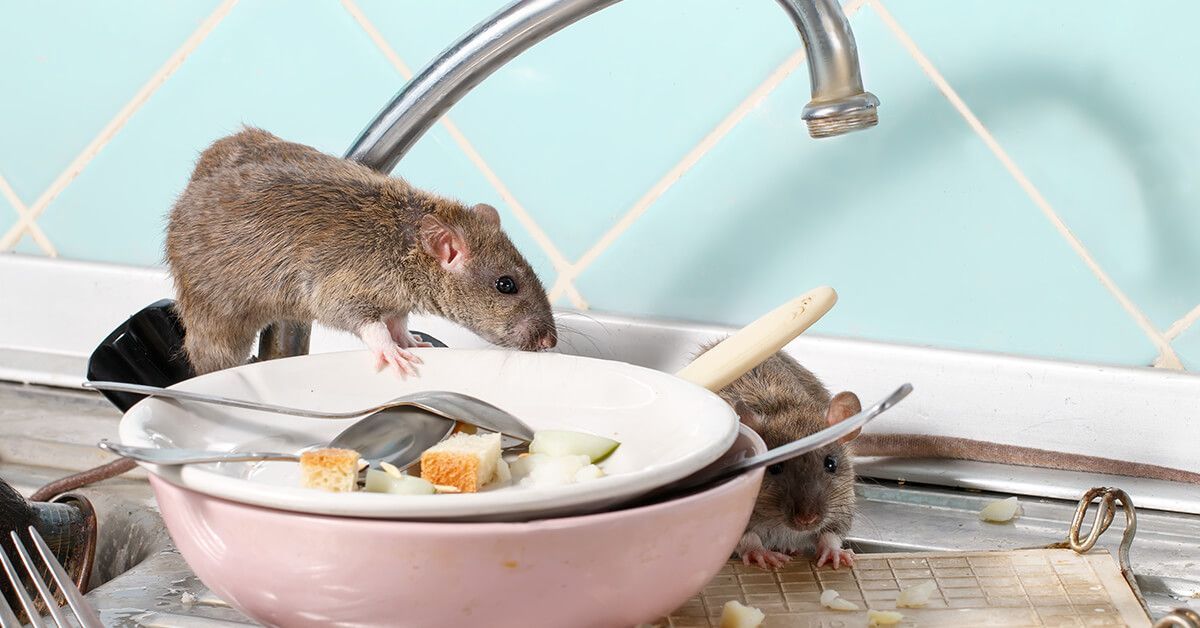In nature, survival hinges on adaptation and resourcefulness—two things the walking stick species have mastered very well. With their slender bodies and unique ability to camouflage themselves from predators, these insects often leave many people wondering—what do they actually eat?
Just as any other insect, these masters of disguise have to find sustenance in order to survive in the wild. And while these insects are sometimes kept as indoor pets, we’ll focus on the species that remain in the wild in the United States and around the world.

A member of the order Phasmida or Phasmatodea, “walking sticks” are also commonly referred to as walking stick bugs, stick insects, or stick bugs. The USDA Forest Service has also compiled a list of fancier nicknames commonly used to describe walking sticks, including stickbug, prairie alligator, devil’s horse, devil’s darning needle, and witch’s horse.
This long cylindrical bug gets its name from its ability to camouflage or mimic the appearance of sticks, twigs, branches, and even leaves in their natural habitat. While there are several varieties of stick bugs, the two most common types are:
Diapheromera femorata
This insect has a small square head with long antennae and six slender legs. Female Diapheromera femorata typically measure about 95 mm (3.74 inches), while males usually measure on the shorter side, around 75 mm (2.95 inches).
Megaphasma denticrus
Nicknamed the “giant walking stick,” this insect is known to be practically imperceptible from their environment when they stop moving. The Megaphasma denticrus is usually wingless and measures up to almost 110 mm (4.33 inches).
With over 3,000 species of walking stick bugs, these pests can be found practically everywhere except Antarctica. With such a wide distribution across preferred tropical and temperate regions, there are many habitats where you might encounter walking sticks:
- Forests
- Gardens
- Parks
- Grasslands
- Savannas
- Tropical regions
- Subtropical regions
- Temperate regions
- Islands
Walking stick insects prefer different locations based on their species, but they generally choose to live in an area that is rich in vegetation and offers enough foliage so they can remain hidden from predators.
OTHER LOCATIONS
Stick bugs can also be found in parts of Africa, Asia, Central America, Eurasia, Europe, and South America.
Among the vast array of walking stick species, one of the unifying characteristics that binds them together is their shared dietary preference as herbivores or insects that eat only plants. In the wild, walking sticks prefer to eat these types of leaves:
Hazel
While hazel is not an evergreen plant, it is a go-to favorite for most stick insects.
Oak
Oak trees are very common in the United States, making oak leaves a popular food choice. However, oak leaves do not remain green year-round, so walking stick insects are forced to find alternate food options in the winter months.
Bramble
Compared to oak leaves, bramble leaves stay green all year long, providing a consistent source of food and nutrition. It is important to note that stick insects avoid brightly colored leaves due to their toxic nature, but
dark-colored leaves are good.
Blackberry
Almost all species of stick insects show a strong preference for eating blackberry leaves.
Rose
Rose leaves are another commonly preferred snack by stick insects, especially ones that enjoy eating bramble because it is readily available and non-toxic.
Ivy
This evergreen climbing or ground-creeping plant is readily available in wooded areas and offers multiple varieties to choose from. For wild walking sticks, they tend to prefer English ivy, German ivy, Irish ivy, North African ivy, and even Persian ivy—all “true ivies” belonging to the
genus
Hedera. Ivy is native to Eurasia and North Africa but has since been introduced to North America and even Australia.
Privet
Privet
stays green year-round and is easy to find. This group of shrubs and small trees are from southern and eastern Asia and are often a favorite food source for nymphs as they hatch from eggs and feed on small-leafed privet and ivy varieties.
Juvenile walking sticks in their nymph stage also enjoy eating berries and shrubs found in close proximity to the popular leaves enjoyed by adult walking sticks.
When it comes time to eat, walking stick insects use their strong mandibles to consume their favorite leafy greens. This feature is quite remarkable, containing impressive mouthparts that have been adapted to consume plant matter. The elongated mandibles of a walking stick are shaped like pincers, possessing enough strength to grasp their food while withstanding the rigorous task of biting and chewing through tough vegetation.
If any unwanted pest has invaded your yard, contact the experts at Local Exterminator for help. Our field experts train daily on pest identification and behavior so they can manage problem pests quickly and conveniently for our customers. Call today for a free quote!


Local Exterminator Services
1513 S Tennessee Street #124
(855) 7822-825
Local Exterminator Services
P.O. Box 2944
(855) 7822-825 New Paragraph
Copyright © 2022 Local Exterminator Services - All Rights Reserved. / Terms & Conditions / Privacy Policy / Index Page


